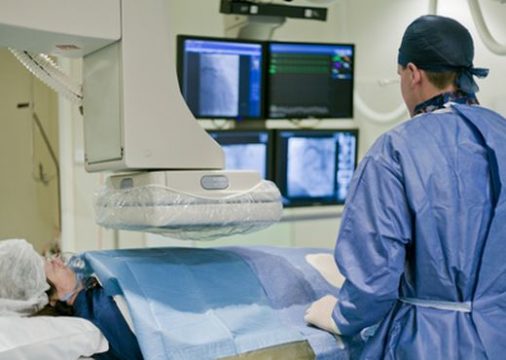In ST elevation MI, the common assessment methodology continues to the angiography; however, we all know it has certain limitations, especially when it comes to intermediate lesions or coronary dissections.

Using imaging, especially high resolution such as OCT, has been looked into by some studies, but never randomized studies.
The EROSION III is a randomized controlled study on patients with ST elevation MI who after guidewire lesion crossing should present a non-obstructive lesion (≤70%) and TIMI flow III. Predilation was excluded, but thrombus aspiration was allowed, when necessary.
The study looked at 226 patients, 112 guided by OCT and 114 by angiography.
There were no differences between populations: mean age was 55, 80% were men, 21% were diabetic. Thrombus aspiration was done in 93% of patients and obstruction rate was 54%.
Read also: Is Increased Mitral Valve Gradient After MitraClip a Long-Term Prognostic Factor?
OCT patients saw 66% plaque rupture, 26% plaque erosion, 4.5% calcified nodules, 0.9% intimal fissure and 2.7% no evidence of obstruction or atherosclerotic lesion.
Anterior descending infarction was more frequent in the OCT group. Also, this population presented longer procedural time.
The OCT group saw 15% reduction in stent implantation (43.8% vs 53.8% p=0.024) and residual lesions (4.6% vs 8.7% p<0.001).
Read also: Hypertrophic Cardiomyopathy: Analyzing a Historical Series.
After one year, there were no differences in death, stroke, MI, TLR, malign arrythmia, rehospitalization for unstable angina or cardiac failure.
Conclusion
In patients with ST elevation MI, OCT guided reperfusión compared against angiography guided reperfusión was associated with lower stent implantation rate at primary PCI. These favorable results indicate the value of OCT imaging guided reperfusión in patients with ST elevation MI.

Dr. Carlos Fava.
Member of the Editorial Board in SOLACI.org .
Original Title: EROSION III A Multicenter RCT of OCT-Guided Reperfusion in STEMI With Early Infarct Artery Patency.
Reference: Haibo Jia, et al. J Am Coll Cardiol Intv 2022;15:846–856.
Subscribe to our weekly newsletter
Get the latest scientific articles on interventional cardiology





